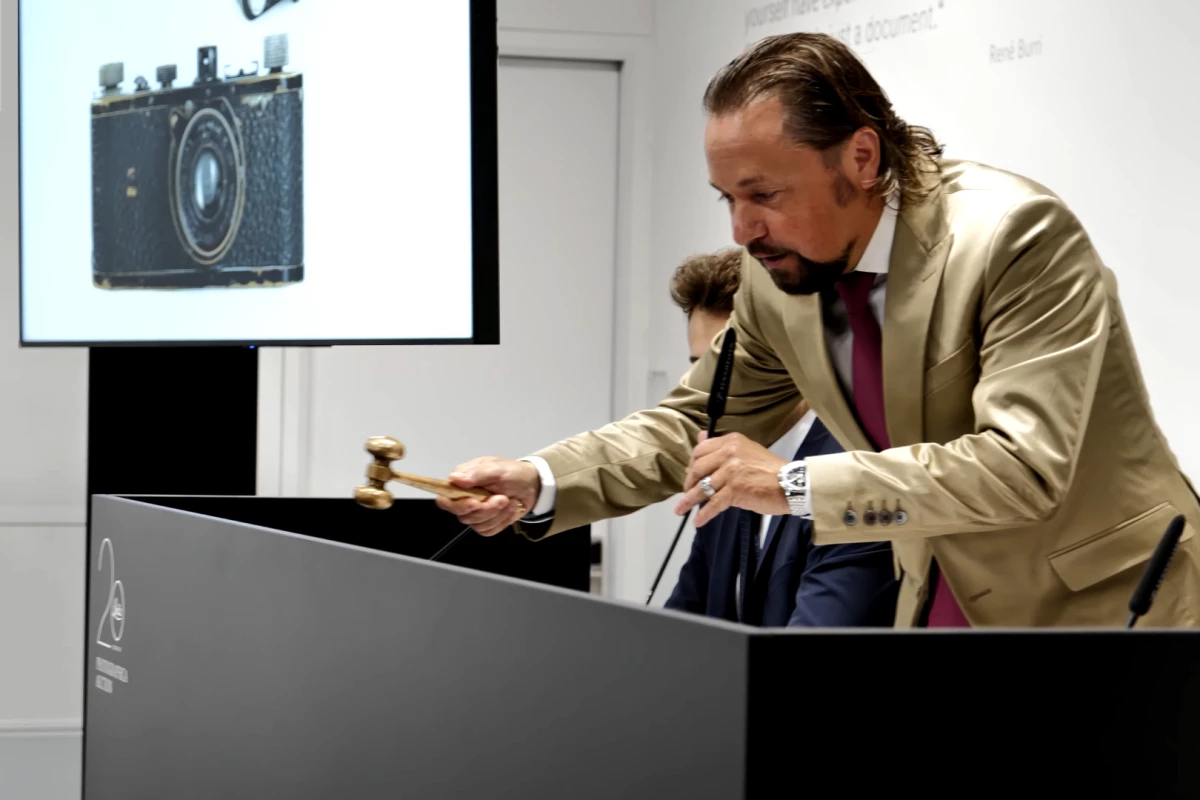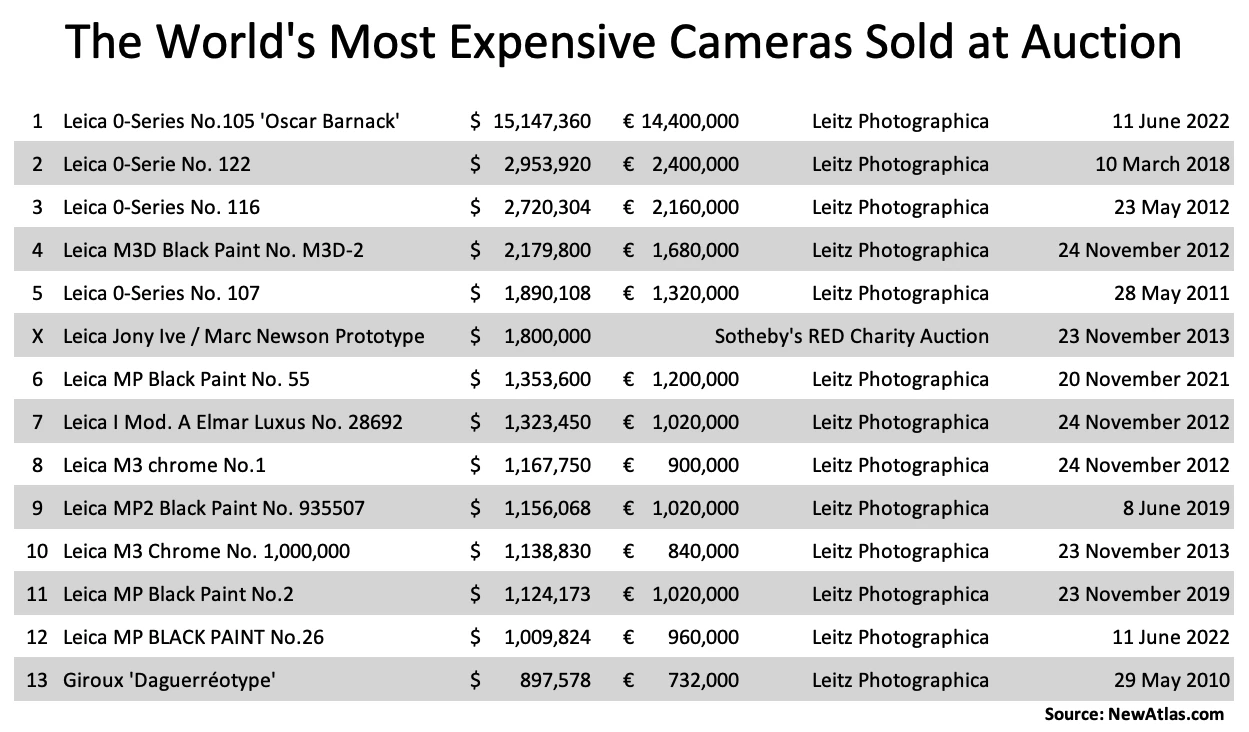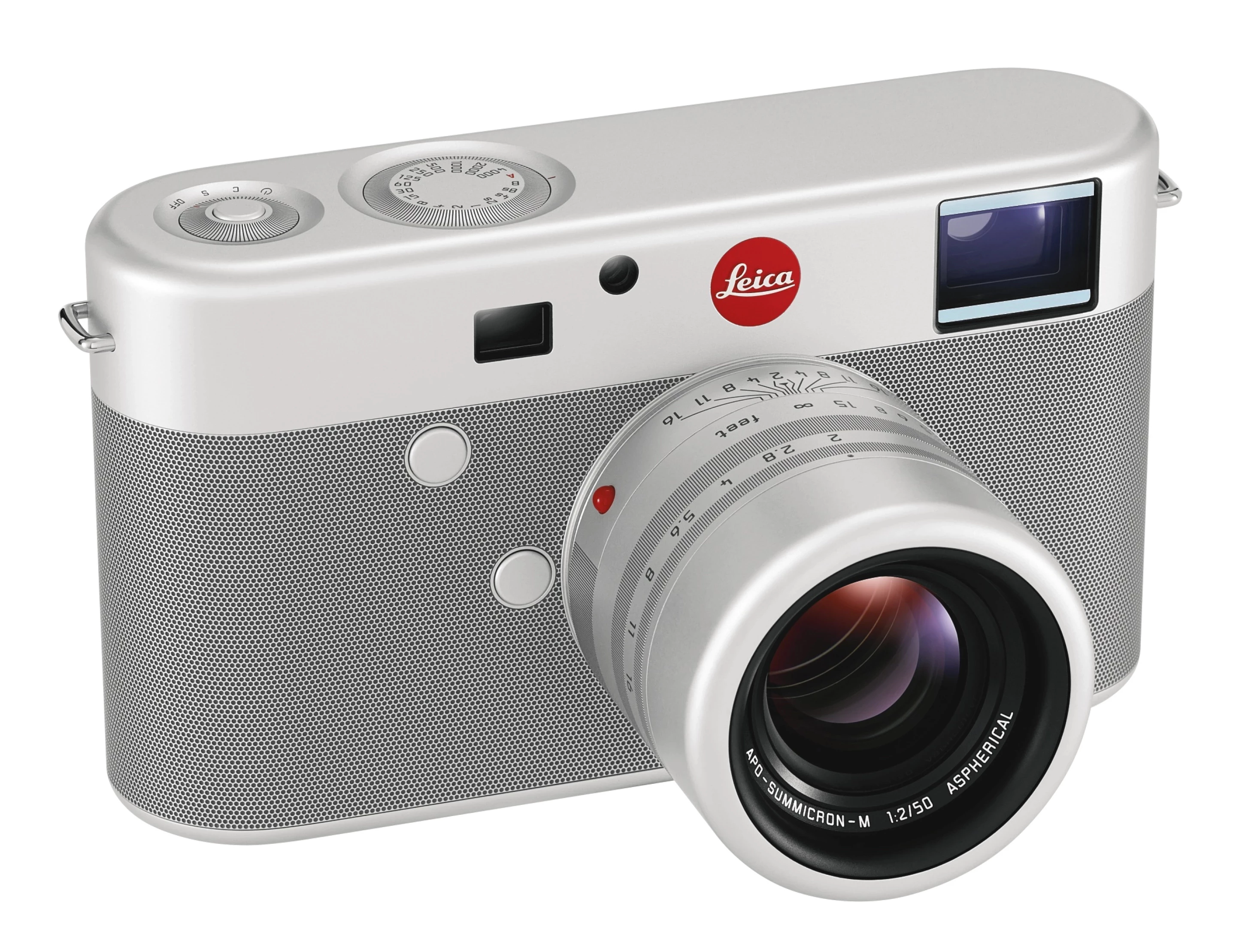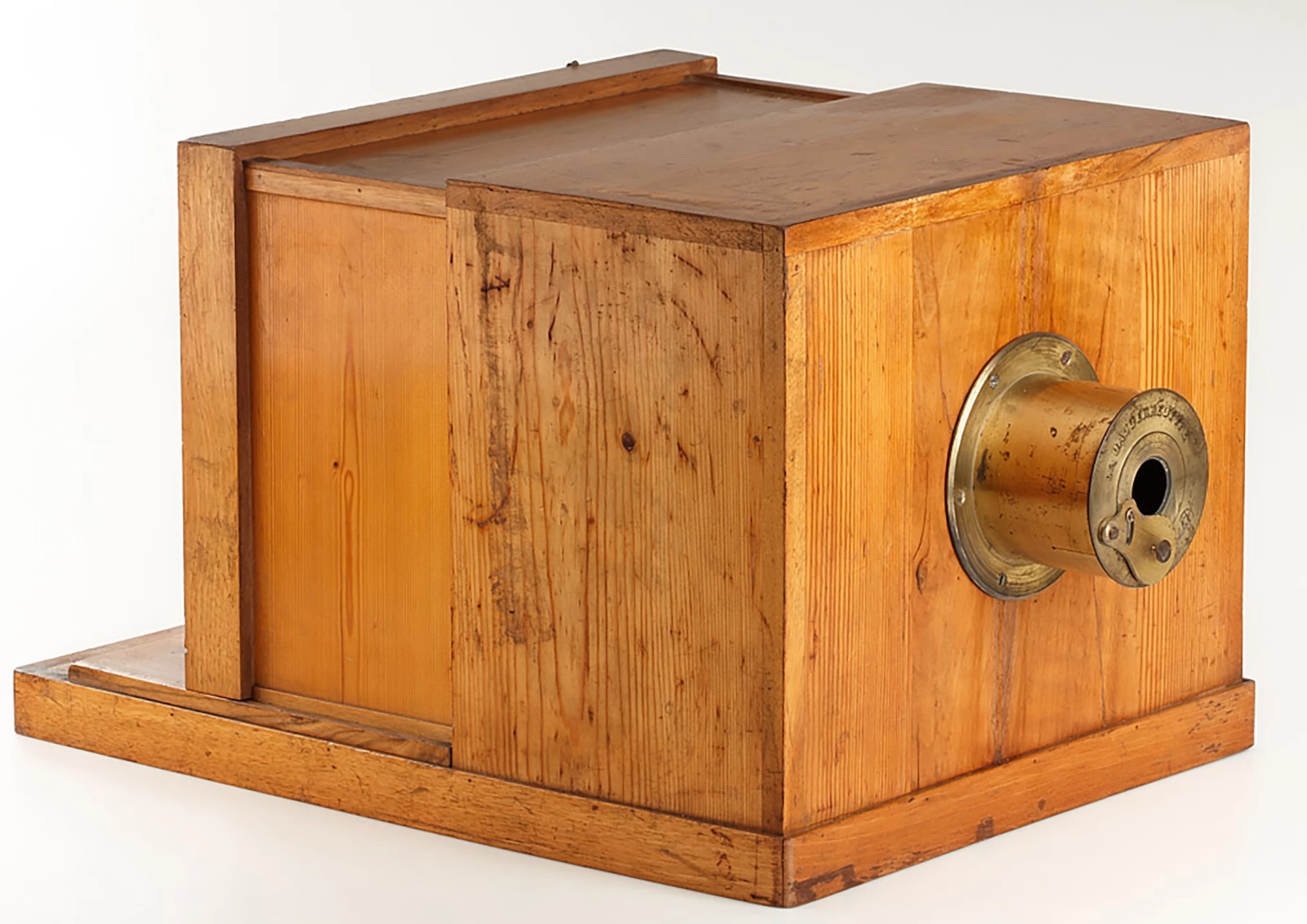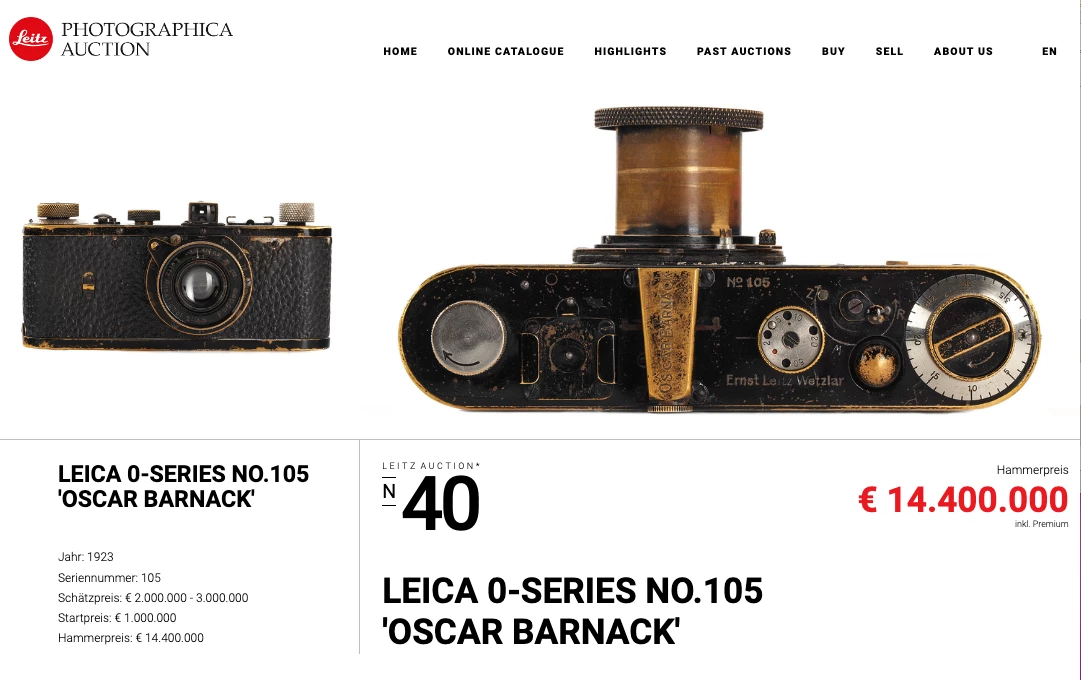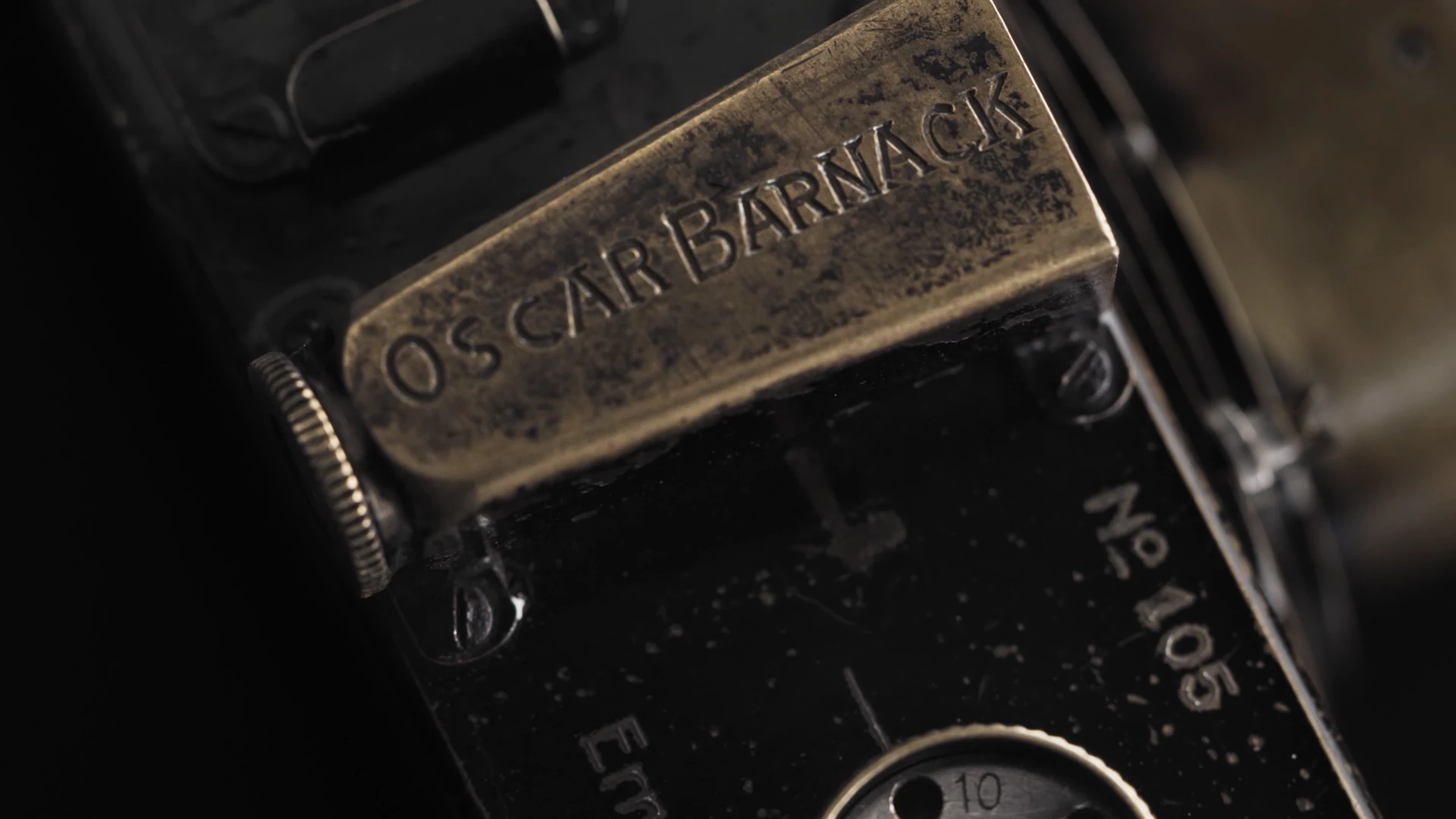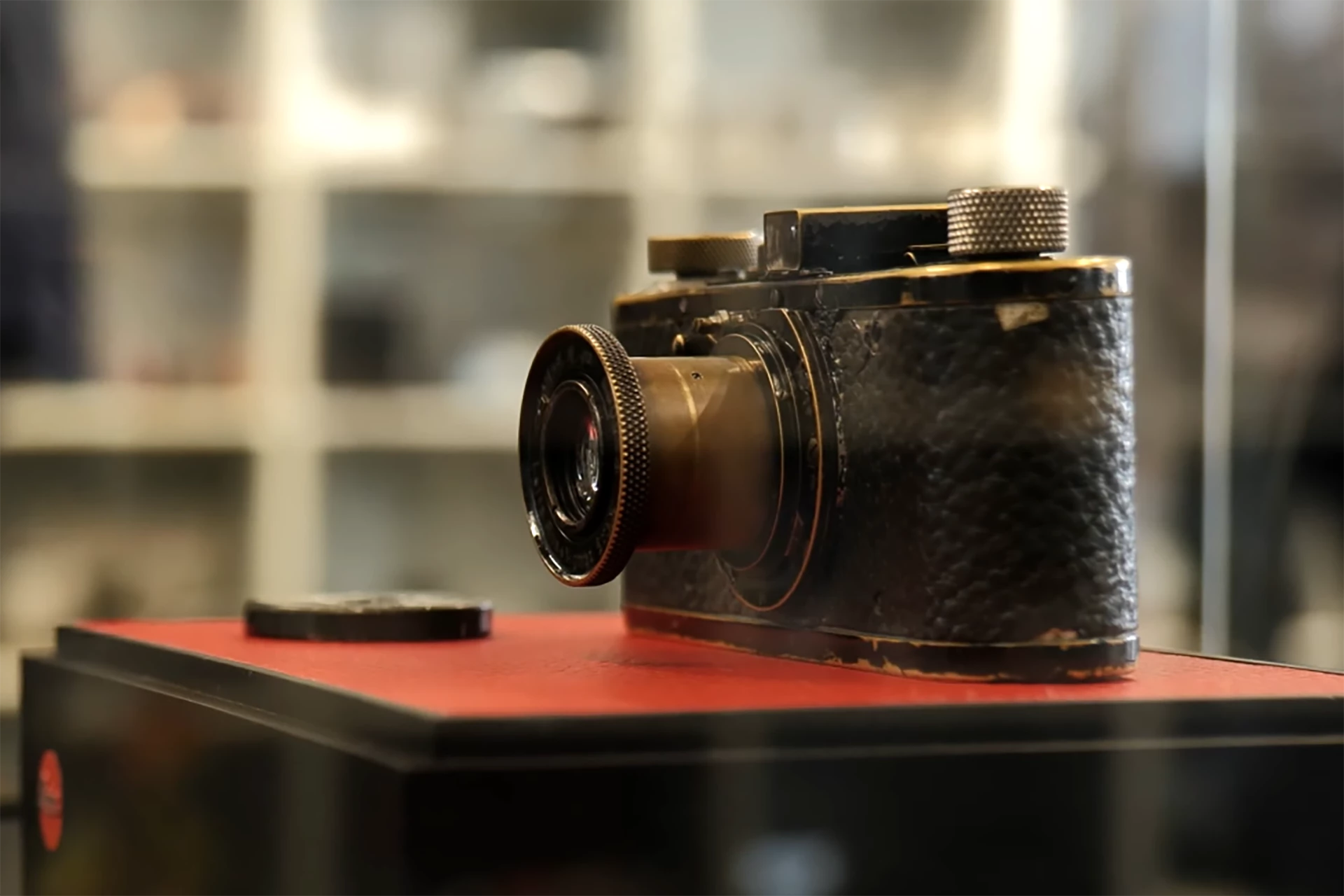Vienna’s Leitz Photographica Auctions celebrated its 20th year in business this week when it sold the camera of the man who invented 35-mm photography for €14,400,000 (US$15,147,360), smashing the previous world record of €2,400,000.
Oskar Barnack was just 34 years of age when he built, in 1913, what would later become the first commercially successful 35mm still-camera, subsequently called Ur-Leica for Ernst Leitz Optische Werke.

Before the Leitz Camera went into production in the mid-1920s, almost instantly making 35 mm the new standard format for professional photographers, it is thought that around 20 examples of the O-Series were manufactured.
Only a dozen of the originals are extant and when they go to auction, they invariably sell for more than a million dollars. The above video offers wonderful detail of the new record holder.
For those who wish to see the magical scenes as the hammer fell on a new world record
that was five time greater than any previous price paid for a camera, the above video catches the moment.
The most recent examples of the O-Series at auction prior to this have all fetched world records, with the most recent being Serial Number 122 which fetched a world record €2,400,000 ($2,953,920) on 10 March 2018.
Prior to the 2018 world record, the previous O-Series to go to auction at Leitz Photographica was Serial Number 116 which fetched a then world record of €2,160,000 ($2,720,304 - see our story covering the event) in 2012, and the year prior (28 May 2011) for €1,320,000 (Serial Number 107).

Barnack adapted 35-mm cinematic film for still camera use with a larger negative than other 35-mm cameras of the time. The pronged-film rollers holding the perforated film allowed more precision than typical paper-backed roll film.
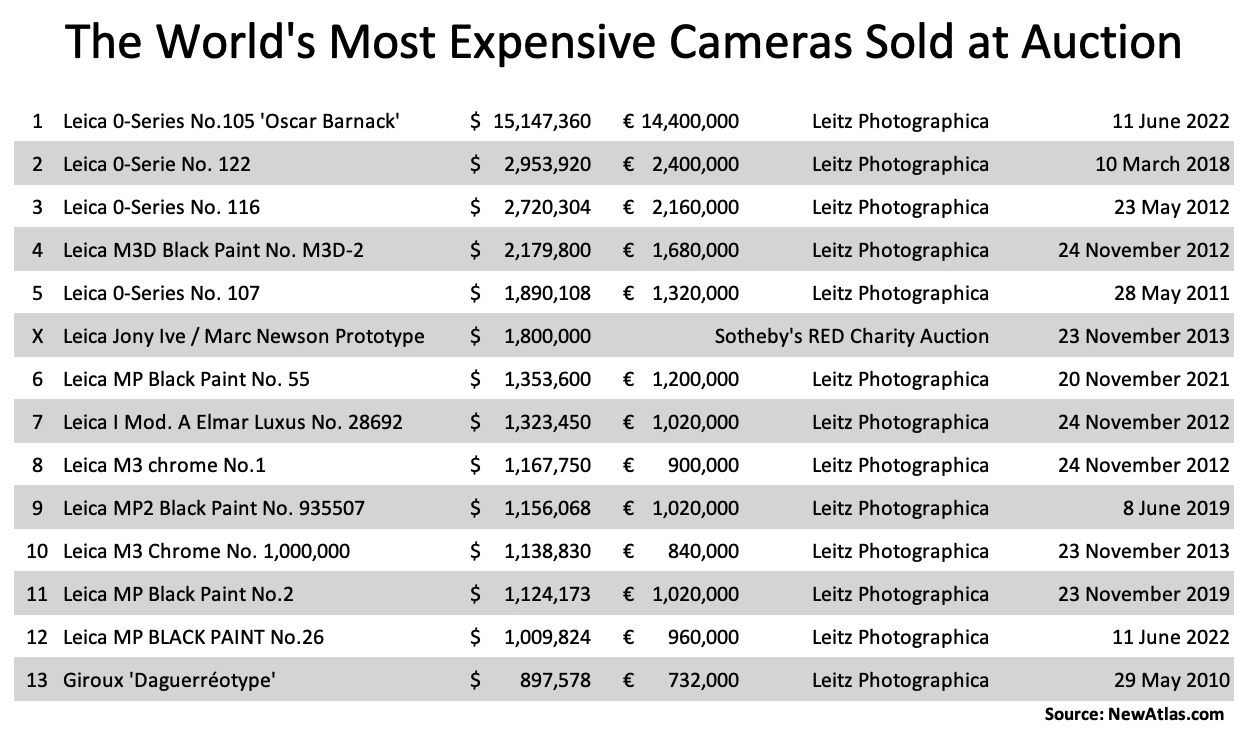
His design was revolutionary because he transported the film horizontally, allowing an extended frame size to 24 x 36 mm with a 2:3 aspect ratio, instead of the 18 x 24 mm of cameras that carried the film vertically. Negatives in this small format could be enlarged to obtain sharper positive images. For this to be effective, the camera also needed a high-quality lens capable of producing the larger format film's quality.
A who's who of the world's photographers used Leica
Many of the world's greatest photographers have used the Leica, with names such as Henri Cartier-Bresson, Aleksander Rodchenko, Ilse Bing, Lee Miller, Robert Doisneau, Arthur Rothstein, Helmut Newton, Diane Arbus and Georgia O'Keeffe among the ranks, but certainly the most celebrated of all, and particularly at auction, is Man Ray.

Statistically, American Man Ray is now the world's most valuable photographer. and his work has now elevated him well beyond all others. He protested that the quality of the camera didn't matter, but he used a Leica.
He set his first world record price for a photograph when his “n°06 Rayograph” from “Champs Délicieux” sold for $126,500 in 1990.

In 1993, “Glass Tears” (1932) sold for $193,895 to give him a second world record, and in 1998, in the midst of a global forgery scandal of his photographs, “Noire et Blanche” (1926) sold for $607,500 to give him his third world auction price record .

This price was remarkable in many ways but mostly because it was achieved in the months following international news of the biggest photography forgery scandal in history, and specifically about the mass forgery of Man Ray’s work.
On 7 April 1998, Paris daily newspaper Le Monde broke the news of a counterfeiting ring that had produced scores of Man Ray photographs, feeding them into the fine art marketplace over two decades. Every newspaper of worth in the world followed the story, and it was slowly but surely smothered and obfuscated and even two decades later, no-one is quite sure what happened.
Some suggested reading on the subject: Intrigue in the World of Photography II: The Fake Man Ray Prints and ArtCult France's Adrian Darmon also weighs in on the scandal.
The prints were produced from copies of the original negative plates, sometimes on photographic paper manufactured as recently as the 1980s and 1990s, certificates of authenticity had been issued, sales had been made through reputable dealers and at auction and the Man Ray scandal rocked the art world like no other before or since. Not only did this damage lots of credibility and trust, it highlighted photography's greatest weakness at auction - if supply can be increased arbitrarily, then its scarcitry and value cannot be relied upon and it is a dubious investment mathematically.
But such is the power of Man Ray's work, it not only retained its value, it set another world record. Economic levitation!
Many experts believe that "scores" of forged Man Ray photographs are hanging in the finest collections, museums and art galleries in the world still ... and as the scandal broke open, Man Ray set another world record.
These days the world's most successful photographers at auction are masters of inventory control and the "limited edition" model of fixed scarcity, but 100 years ago, artists were responsible for their own survival and it was that poor administration of Man Ray's body of work that was exploited by the forgers.
His most recent world record is thoroughly deserved, but it is high time the art world began to seek a better definition of what a photograph is.

With four photographs having set world auction records, and “Glass Tears” acknowledged as the first photograph to sell for more than a million dollars (when San Francisco collector John A. Pritzker paid $1.3 million privately in 1999), Man Ray's success at auction defies the odds. These works were photographs
The photography world changed on February 19, 1990 though, and some people still haven't acknowledged that.
That was the day that Photoshop was released. - for photographers, Photoshop enabled a direct link between the captured image and art - with manipulation tools that Man Ray might have dreamed of when he was producing his Rayographs (photographs without a camera).
Man Ray produced photographs with his imagination just as Andy Warhol manipulated celebrity imagery
The Brigitte Bardot Experiment

If you were designing an experiment to determine the value of celebrity, Sotheby's and Gunther Sachs provided that a decade ago with the above scenario - which effectively cancelled out most of the variables that confuse the auction value equation - the same place, the same time, the same audience, the same auctioneer, the same auction house and the same image ... just different names.
At left is a portrait of Brigitte Bardot by Richard Avedon. It is entitled "Brigitte Bardot, Hair by Alexandre, Paris Studio, 1959" and described in the catalogue as "Gelatin silver print, signed and numbered 6/35 in felt-tip pen in the lower margin." It measures 61 by 50.5 cm (24 by 19 7/8 inches), and it was photographed in 1959 and printed at a later date, and on the reverse there's also a stamp that reads "This photograph may not be reproduced without written permission of Richard Avedon."
The image at right, is entitled "Brigitte Bardot" by Andy Warhol, it was "executed in 1974" and is described as an "acrylic and silkscreen ink on canvas", and it measures 120 by 120 cm (48 by 48 inches). The image at left sold for GBP £145,250 (USD $229,030) and the image at right sold for £3,009,250 ($4,744,985).
Avedon and Warhol were friends and there is no doubt the Warhol work was done with his blessing, but ... (to be continued)
